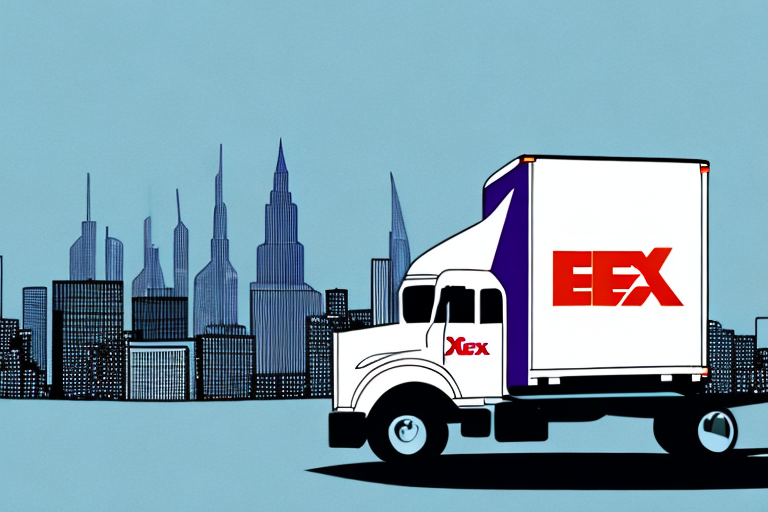Are FedEx Shipping Rates Expensive?
When it comes to shipping, businesses are always on the lookout for cost-effective solutions. In today's world of online sales, fast and efficient shipping is a must. One common courier service that provides shipping services across the world is FedEx. However, many businesses are hesitant to use FedEx due to concerns about high shipping rates. In this article, we will explore whether FedEx shipping rates are really that expensive and provide an in-depth analysis of the factors that affect shipping rates, tips for reducing costs, and other related concerns.
Understanding FedEx Shipping Rates: An Overview
To begin with, it is essential to understand how FedEx calculates shipping rates. A variety of factors come into play, such as package dimensions, weight, and destination. FedEx offers a range of shipping services, including same-day delivery, next-day delivery, and multi-day delivery. Each service comes with its own pricing structure, and the rates may vary based on package type and destination.
FedEx also offers discounts for certain customers, such as those with high shipping volumes or frequent use of specific services. Additionally, FedEx may provide promotional discounts during certain times of the year or for specific types of shipments. It is always a good idea to check for any available discounts before shipping with FedEx.
How Do FedEx Shipping Rates Compare to Other Carriers?
While FedEx shipping rates may seem high, they are comparable to other major carriers such as UPS and USPS. Factors such as delivery speed, package weight, and destination also impact the cost of shipping. It's essential to compare the rates offered by different carriers to find the best deal, which requires thorough research and analysis of each carrier's specific service offerings.
Additionally, it's important to consider the level of customer service provided by each carrier. FedEx is known for its exceptional customer service, with a dedicated team available to assist with any shipping-related questions or concerns. This level of support can be invaluable, especially for businesses that rely heavily on shipping to operate. When comparing shipping rates, it's crucial to factor in the level of customer service provided by each carrier to ensure a smooth and stress-free shipping experience.
Factors that Affect FedEx Shipping Rates
Several factors influence FedEx shipping rates, such as package size, weight, and distance. Additionally, fuel surcharges, residential delivery fees, and delivery area surcharges can add significantly to the overall costs. The type of shipping service you choose and the packaging materials may also impact the pricing.
Another factor that can affect FedEx shipping rates is the time of year. During peak holiday seasons, shipping rates may increase due to high demand. Planning ahead and considering shipping options early can help avoid higher costs.
The destination country also impacts shipping rates. International shipping rates may vary depending on the country's customs regulations, taxes, and duties. Researching and understanding the regulations of the destination country is crucial to avoid unexpected fees and delays.
Tips for Reducing Your FedEx Shipping Costs
- Select Slower Shipping Services: Opting for ground or multi-day delivery can significantly reduce shipping costs compared to expedited services.
- Use Your Packaging Materials: Utilizing your own packaging can help lower costs compared to using FedEx’s packaging materials.
- Consolidate Multiple Packages: Combining multiple shipments into one can save money by reducing the overall package weight and the number of shipments.
- Open a Business Account: Business accounts with FedEx often come with discounts and exclusive offers not available to individual shippers.
Additionally, take advantage of FedEx's online tools and resources. For example, use the shipping calculator to compare rates for different shipping options and destinations. Utilize the address validation tool to ensure your package is sent to a valid address, avoiding additional fees for incorrect or incomplete addresses.
Finally, consider negotiating with FedEx if you are a frequent shipper. High-volume shippers may be able to negotiate lower rates or receive additional discounts. Reach out to your FedEx representative to discuss your shipping needs and explore opportunities for cost savings.
Negotiating Better Shipping Rates with FedEx
If your business ships orders frequently, building a long-term relationship with FedEx can be beneficial. Many businesses can negotiate better shipping rates for high-volume accounts, long-term contracts, or mutual partnerships. Establishing a relationship with your local FedEx representative can also help you stay informed about new discounts and offers that can save you money.
Another strategy to negotiate better shipping rates with FedEx is to consider using their less expensive shipping options. FedEx offers a variety of shipping services, including ground shipping, which can be more cost-effective than express shipping options. By analyzing your shipping needs and choosing the most appropriate service, you may be able to save money on shipping costs. Additionally, consolidating multiple shipments into one package can lead to lower shipping rates.
Comparing Different FedEx Shipping Options and Their Costs
FedEx offers various shipping options, with costs varying by service level and package size. Some of the more popular options include:
- FedEx Ground: Cost-effective for heavier packages with delivery typically within 1-5 business days.
- FedEx Express Saver: Delivery within 3 business days.
- FedEx Overnight: Next-business-day delivery options.
The key is to research available options and select the best one for your specific delivery needs. Another important factor is the destination of your package. For domestic shipments, ground shipping may be the most cost-effective option, while international shipments might require express or priority shipping to ensure timely delivery.
Additionally, FedEx offers extra services such as signature confirmation, insurance, and Saturday delivery for an additional fee. These services can provide added peace of mind and convenience but should be factored into your overall shipping costs.
Understanding the Differences Between Retail and Commercial Shipping Rates
FedEx offers different rates based on who is shipping the packages. Retail shipping is intended for small businesses or individuals who do not ship frequently. Commercial shipping rates are offered to businesses that ship in bulk or consistently. Commercial rates usually offer lower prices than retail rates, making them ideal for any business that ships frequently.
However, commercial shipping rates often come with additional requirements, such as minimum package weight or volume. These requirements may not be feasible for smaller businesses or individuals who only need to ship a few items at a time. Retail rates, on the other hand, are more flexible and may be a better option for those who do not meet the requirements for commercial rates.
In addition to rates, there may also be differences in shipping options and services offered between retail and commercial shipping. For example, commercial shipping may offer more advanced tracking and delivery options, while retail shipping may have more limited options. Carefully consider your shipping needs and compare the available options to determine which type of shipping is best for your business or personal needs.
How to Calculate Your FedEx Shipping Costs
Calculating your FedEx shipping costs involves considering several factors such as package dimensions, weight, destination, and shipping options. The FedEx online shipping calculator can help you determine the cost of shipping your packages before sending them. This allows you to budget appropriately for your shipping expenses and plan your logistics accordingly.
Common Misconceptions About FedEx Shipping Rates
Many businesses harbor misconceptions about FedEx shipping rates, often believing that the shipping service is too expensive. However, these reports are not always accurate. FedEx offers a range of competitive pricing options, and the costs vary based on several different factors. Instead of making assumptions, take the time to research your specific shipping requirements and the corresponding shipping rates.
The Impact of Fuel Surcharges on FedEx Shipping Rates
FedEx, like other courier services, is subject to fluctuations in fuel prices. To keep up with these price changes and ensure profitability, FedEx imposes a fuel surcharge. The fuel surcharge is usually a small percentage of the total shipping fees, but it can add up over time. It's important to always be aware of the current fuel surcharge rate and factor it into your shipping budget.
How to Save Money on International Shipping with FedEx
International shipping can be expensive, but FedEx offers several solutions to help reduce costs. Some strategies include:
- Consolidate Multiple Shipments: Combine shipments to reduce the number of packages and overall shipping costs.
- Avoid Residential Delivery Surcharges: Opt for business addresses when possible to avoid additional fees.
- Choose Longer Shipping Durations: Selecting standard shipping instead of expedited services can lower costs.
- Use Third-Party Logistics Providers: Partnering with 3PLs can lead to more cost-effective international shipping solutions.
These strategies can help manage and reduce international shipping expenses while maintaining reliable and efficient delivery services.
Analyzing the Pros and Cons of Using FedEx for Your Business's Shipping Needs
Selecting the right courier service for your business is crucial. While FedEx is a well-established and reliable shipping provider, it may not always be the most inexpensive option. Here are some pros and cons to consider:
- Pros:
- Extensive global network
- Reliable and fast delivery options
- Exceptional customer service
- Advanced tracking and shipping tools
- Cons:
- Higher costs compared to some competitors
- Additional fees for certain services
- Complex rate structures
By analyzing your specific business needs and comparing them to the prices and services provided by FedEx and other courier services, you can make an informed decision about whether FedEx is the right fit for your business.
How to Use Third-Party Logistics (3PL) Providers to Reduce Your FedEx Shipping Costs
Third-party logistics providers can help businesses reduce their FedEx shipping rates while providing reliable and efficient shipping solutions. These providers leverage bulk shipments and preferential discounts with courier services like FedEx to offer more affordable rates. By partnering with 3PL providers, businesses can save money on shipping costs while still meeting their delivery expectations.
Expert Tips for Getting the Best Deals on FedEx Shipping Rates
Here are some expert tips to help you find the best deals on FedEx shipping rates:
- Review Your Shipping Data: Analyze your shipping patterns to identify areas where you can optimize and reduce costs.
- Consolidate Shipments: Combine multiple shipments to lower overall shipping costs.
- Leverage Bulk Shipping Rates: Take advantage of discounts available for high-volume shippers.
- Negotiate with FedEx Representatives: Discuss your shipping needs and explore opportunities for better rates.
- Stay Informed About Promotions: Keep an eye on FedEx’s promotional offers and incentives to maximize savings.
- Compare with Other Carriers: Regularly compare FedEx rates with other carriers to ensure you are getting the best possible deal.
Implementing these strategies can help you secure the most cost-effective shipping rates and enhance your overall shipping efficiency.
In Conclusion
Overall, FedEx shipping rates are competitive with other carriers, but they may vary depending on several factors. By carefully analyzing your specific shipping requirements and researching the shipping options provided by FedEx and other carriers, you can find the best possible pricing for your business's shipping needs. With the right strategies and insights, businesses can save money on their shipping costs and provide fast, efficient, and cost-effective shipping solutions to their customers.




















